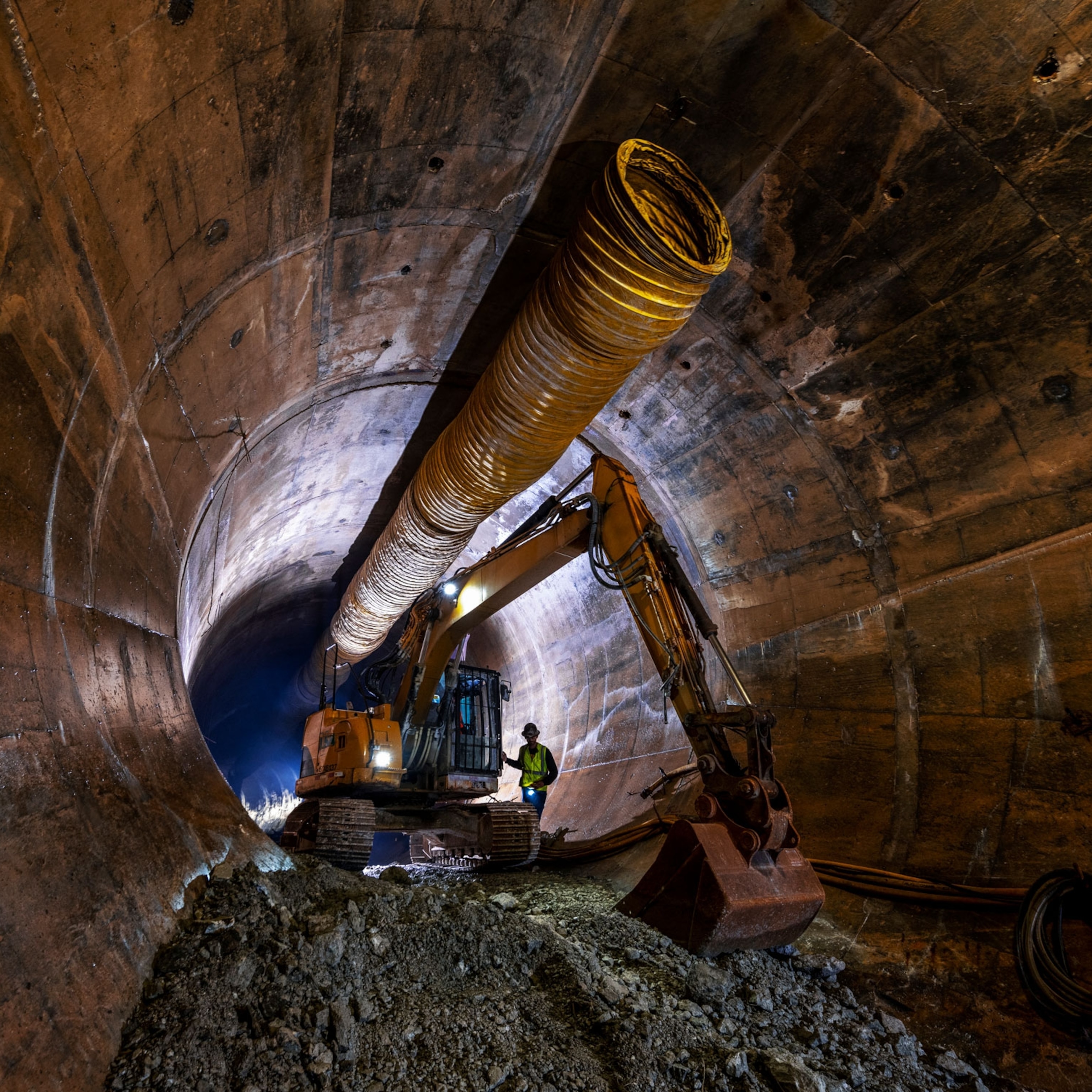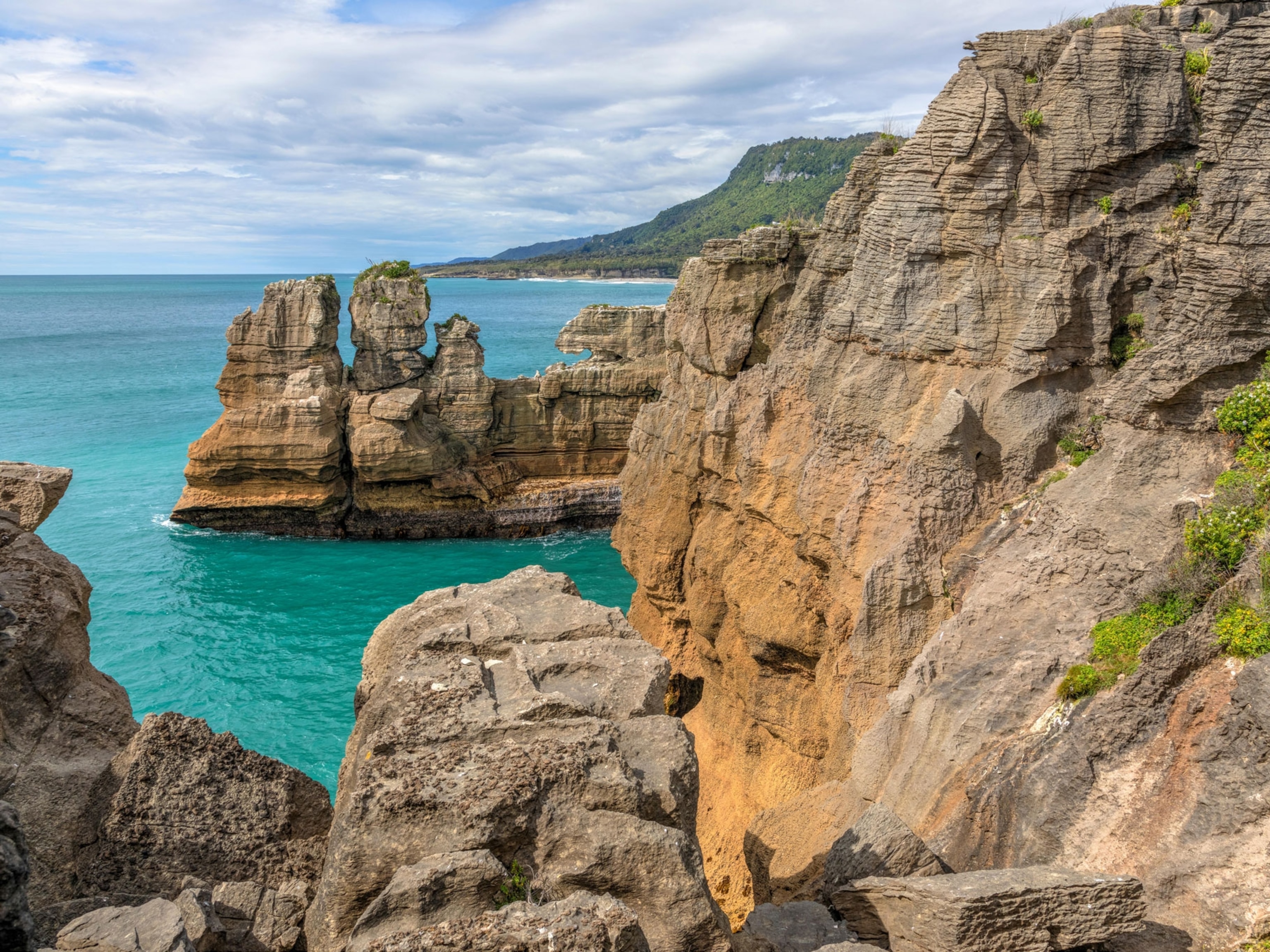
What the West's Ancient Droughts Say About Its Future
The American West could face centuries of parched land, as it has in the past.
A millennium ago—just yesterday, in geologic time—Native Americans waited all winter for rains that never came. They waited the next winter and the next. Then the marshes of their sacred San Francisco Bay turned from cattails to salt grass. Fishing declined and the Native Americans could no longer rely on the bounty of the bay. Finally, they left, hungry and thirsty, in search of water.
Now, as modern Californians hope for fierce storms to break a dangerous dry spell, the questions arise: Is the current drought just an aberration? Or might it signal the beginning of a more fearsome era, with echoes of the ancient drought that uprooted Native Americans? Is it a megadrought?
Most scientists sidestep a yes or no answer. But they agree that the past century has been unusually moist—and warn that California is now vulnerable to a drought that is measured not in years, but decades. Perhaps even centuries.

On a trip to California's Central Valley on Friday, U.S. President Barack Obama is expected to link the drought to climate change and to announce federal aid aimed at "climate resilience."
But ancient clues in the landscape show this is not the first time the American West has been severely parched. It's unlikely to be the last. And the recent spate of dry years is nothing next to the ancient "megadroughts" that have occurred multiple times in human history. "What research shows is a roughly 50- to 90-year cycle of wet and dry periods over the last few thousand years, with some droughts lasting over a decade. But between 900 and 1400 A.D., during the 'Medieval Warm Period,' there were a couple of droughts that were over a century long," said B. Lynn Ingram, professor of Earth and planetary science and geography at the University of California, Berkeley, and co-author of the book The West Without Water: What Past Floods, Droughts, and Other Climatic Clues Tell Us About Tomorrow.
"The 20th century was a relatively wet time, and a time when all of our modern societies were built," she said. "We've had centuries where it was far drier. We're not prepared."
This winter is on track to be California's driest since it became a state in 1850, with reservoirs at record-low levels, farmers fallowing fields, and fire danger high. Although one recent storm offered a respite from months of sunshine, California needs four more similarly sized storms to catch up to the season's average precipitation, according to meteorologist Jan Null of Golden Gate Weather Services. And there's not much winter left.

Whether or not more rain comes this winter, the culmination of three years of below-average precipitation means that the state is entering its traditionally dry period from May to October with a dire water shortfall.
Weeks of dry skies conjure up uneasy memories of the drought of 1976-77, when Californians added bricks to toilet bowls and captured shower water in buckets. Or, more ominously, the Great Plains' devastating Dust Bowl drought of the 1930s, when the world's greatest grasslands blew away, soil blackened the sky, and lungs were packed with dirt and sand. Farmers fed thistles and cactuses to cattle so they wouldn't starve, and many abandoned their homes in search of rain and relief. The region lost a quarter of its population.
But the prehistoric record, re-created by paleoclimatologists, is even more alarming—and could explain why Native Americans abandoned their settlements and began wandering. Archeological records show that Native American populations expanded in wet years, creating flourishing civilizations. Then, during periods of abnormally low precipitation, settlements collapsed.
Clues From Ancient Trees
Like investigators at a crime scene, scientists are piecing together seemingly random evidence about ancient climates, deciphering clues about prehistoric droughts in sediments, tree rings, species distribution, and other natural evidence—a science known as dendrochronology.
The varying widths of tree rings, for instance, reveal that several pernicious dry spells gripped the West in the late 1500s. In a landmark study conducted in the 1940s, Edward Schulman reconstructed 600 years of Colorado River flow using ring records from long-lived Douglas firs, and found several sustained periods of low flow. It was so dry in 1580 that the giant sequoias in the Sierra Nevada essentially failed to grow at all; all the cores show either extremely thin or absent tree rings.

Another tree study, lead by University of Arkansas dendrochronologist David Stahle and Edward Cook of Columbia University, used more than 1,400 climate-sensitive tree-ring chronologies from multiple species across North America to reconstruct what's called "the Great Pueblo Drought," which occurred from 1276 to 1297 and may have contributed to the Anasazi tribe's abandonment of their magnificent cliff-dwellings in the northern Colorado Plateau.
Other megadrought evidence can be found in forests at the bottoms of lakes and streams, using tree-ring analysis and radiocarbon dating. Graham Kent, director of the Nevada Seismological Laboratory, found a forest in the Sierra Mountains dating back to the medieval era. A drought from 850 to 1150 drained the alpine Fallen Leaf Lake, leaving it barren enough for tall trees to grow, he concluded. Then the water returned, and the trees were preserved. An 800-year-old pine branch, recently salvaged from the lake, still smells pungently of sap.
Ancestral forests can also be found in recently exposed shorelines of eastern Sierra lakes and creeks. Scott Stine of California State University in East Bay tramped across an old lakebed and found dozens of ancient cottonwoods and Jeffrey pines rooted in place. Dating revealed that they grew when two severe and long-lasting droughts—from 900 to 1100, and 1200 to 1350—lowered the water level in the lake, then died when a return to a wetter climate filled the lake and drowned them.

"Water dropped to 60 or 70 percent of what today we consider normal precipitation," he said. "The trees could colonize newly exposed shorelines." Stine has also discovered submerged tree trunks along the shoreline of California's Mono Lake, suggesting that the water level was once tens of feet lower than it is now. Studies of the lake's sedimentary stone show that the water fell to a very low level between 960 and 1460. Research in other Sierra lakes reveal a similar scenario: long dry-wet-dry-wet intervals.
With the drought came adaptation. Frances Malamud-Roam, Ingram's co-author, took sediment core samples in San Francisco Bay that indicate that the bay grew saltier due to the lack of freshwater runoff from the mountains, the presumed result of decreased rain and snowfall. She found evidence that the plant life shifted from tules and cattails, which thrive in fresh or brackish water, to saline-loving salt grass and cord grass.
Frightening Implications
If this is the past, what is the future?
Some scientists think we are already in a megadrought. Bill Patzert, research scientist and oceanographer at NASA's Jet Propulsion Laboratory in Pasadena, believes the drought began in 2000. He has identified patterns in the temperature of the Pacific Ocean that alter the flow of the jet stream, creating a ridge of high pressure off California that sends warm air to Alaska and freezing cold to the eastern United States. This pattern can hold steady for years, he said. (Related: "Could California's Drought Last 200 Years?")

If true, the implications are frightening: More wildfires. Stress on sensitive ecosystems. Less water for agriculture, cities, and wildlife. Wells would go dry, lawns would turn brown, fields would go fallow. There would be an earlier spring, with snowpack that melts quickly. The federal government would likely need to step in with billions of dollars of emergency aid. (Related: "Behind California's January Wildfires: Dry Conditions, Stubborn Weather Pattern.")
And modern Californians, unlike earlier populations, are not so easily uprooted. More than 38 million people, from Silicon Valley to Hollywood, depend on access to water. We've built cities, highways, universities, industries, and vast acres of irrigated farmland.

It is time to begin facing that future now, scientists say, by reducing and improving the efficiency of water use. Increased emission of greenhouse gases will create a global one-way trend toward higher temperatures—making a dry landscape even drier.
"Today, in our technologically sophisticated world, it is easy to believe we are immune to such an outcome. But we have not been seriously tested," wrote Sandra L. Postel, director of the Global Water Policy Project and a National Geographic Fellow, in the introduction to Ingram and Malamud-Roam's book. "We have so successfully masked aridity that we have become imbued with a false sense of security about our water future."
Related Topics
You May Also Like
Go Further
Animals
- Soy, skim … spider. Are any of these technically milk?Soy, skim … spider. Are any of these technically milk?
- This pristine piece of the Amazon shows nature’s resilienceThis pristine piece of the Amazon shows nature’s resilience
- Octopuses have a lot of secrets. Can you guess 8 of them?
- Animals
- Feature
Octopuses have a lot of secrets. Can you guess 8 of them? - This biologist and her rescue dog help protect bears in the AndesThis biologist and her rescue dog help protect bears in the Andes
Environment
- This pristine piece of the Amazon shows nature’s resilienceThis pristine piece of the Amazon shows nature’s resilience
- Listen to 30 years of climate change transformed into haunting musicListen to 30 years of climate change transformed into haunting music
- This ancient society tried to stop El Niño—with child sacrificeThis ancient society tried to stop El Niño—with child sacrifice
- U.S. plans to clean its drinking water. What does that mean?U.S. plans to clean its drinking water. What does that mean?
- Food systems: supporting the triangle of food security, Video Story
- Paid Content
Food systems: supporting the triangle of food security
History & Culture
- Heard of Zoroastrianism? The religion still has fervent followersHeard of Zoroastrianism? The religion still has fervent followers
- Strange clues in a Maya temple reveal a fiery political dramaStrange clues in a Maya temple reveal a fiery political drama
- How technology is revealing secrets in these ancient scrollsHow technology is revealing secrets in these ancient scrolls
- Pilgrimages aren’t just spiritual anymore. They’re a workout.Pilgrimages aren’t just spiritual anymore. They’re a workout.
- This ancient society tried to stop El Niño—with child sacrificeThis ancient society tried to stop El Niño—with child sacrifice
Science
- Soy, skim … spider. Are any of these technically milk?Soy, skim … spider. Are any of these technically milk?
- Can aspirin help protect against colorectal cancers?Can aspirin help protect against colorectal cancers?
- The unexpected health benefits of Ozempic and MounjaroThe unexpected health benefits of Ozempic and Mounjaro
- Do you have an inner monologue? Here’s what it reveals about you.Do you have an inner monologue? Here’s what it reveals about you.
- Jupiter’s volcanic moon Io has been erupting for billions of yearsJupiter’s volcanic moon Io has been erupting for billions of years
Travel
- On the path of Latin America's greatest wildlife migrationOn the path of Latin America's greatest wildlife migration
- Everything you need to know about Everglades National ParkEverything you need to know about Everglades National Park
- Spend a night at the museum at these 7 spots around the worldSpend a night at the museum at these 7 spots around the world
- How nanobreweries are shaking up Portland's beer sceneHow nanobreweries are shaking up Portland's beer scene







